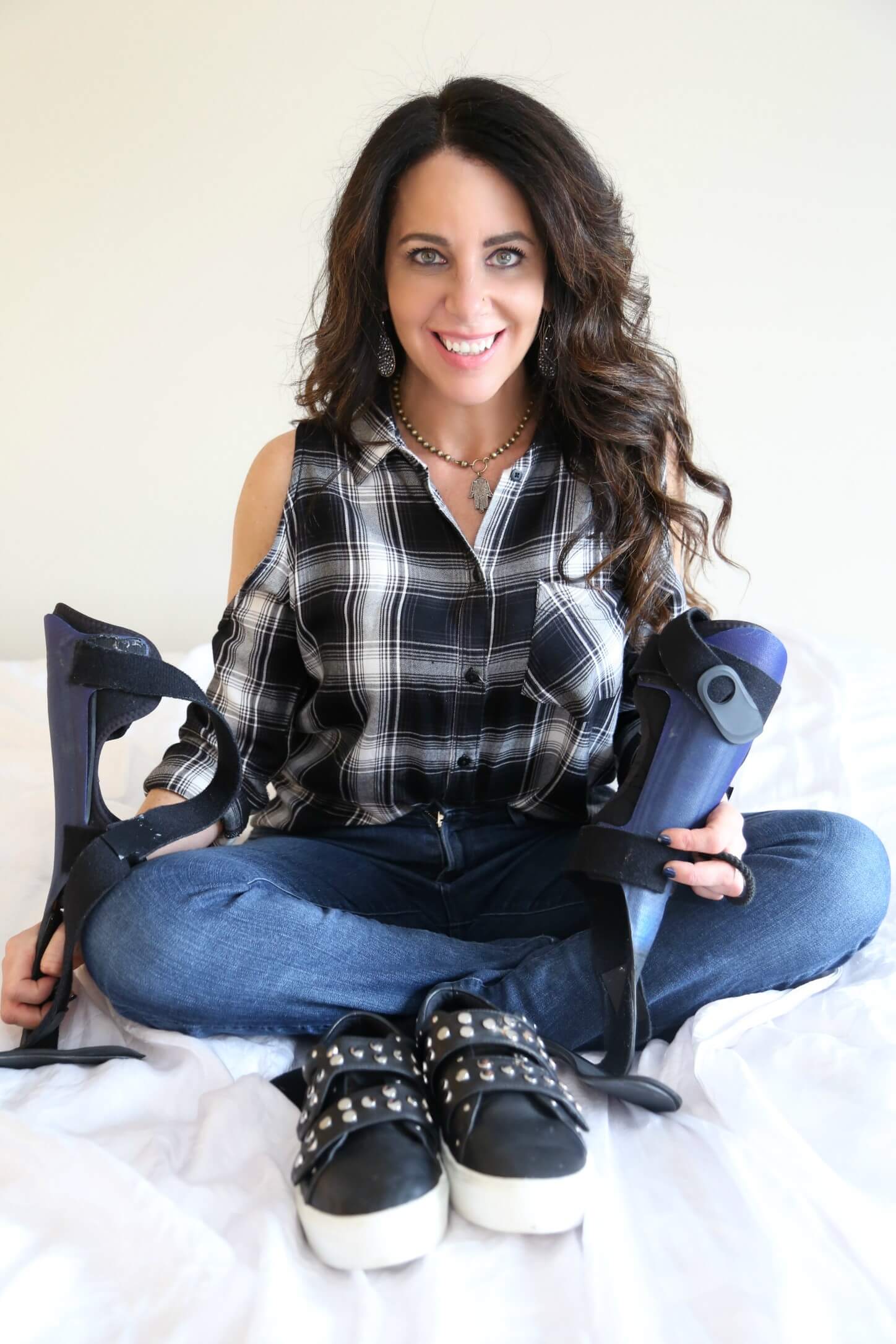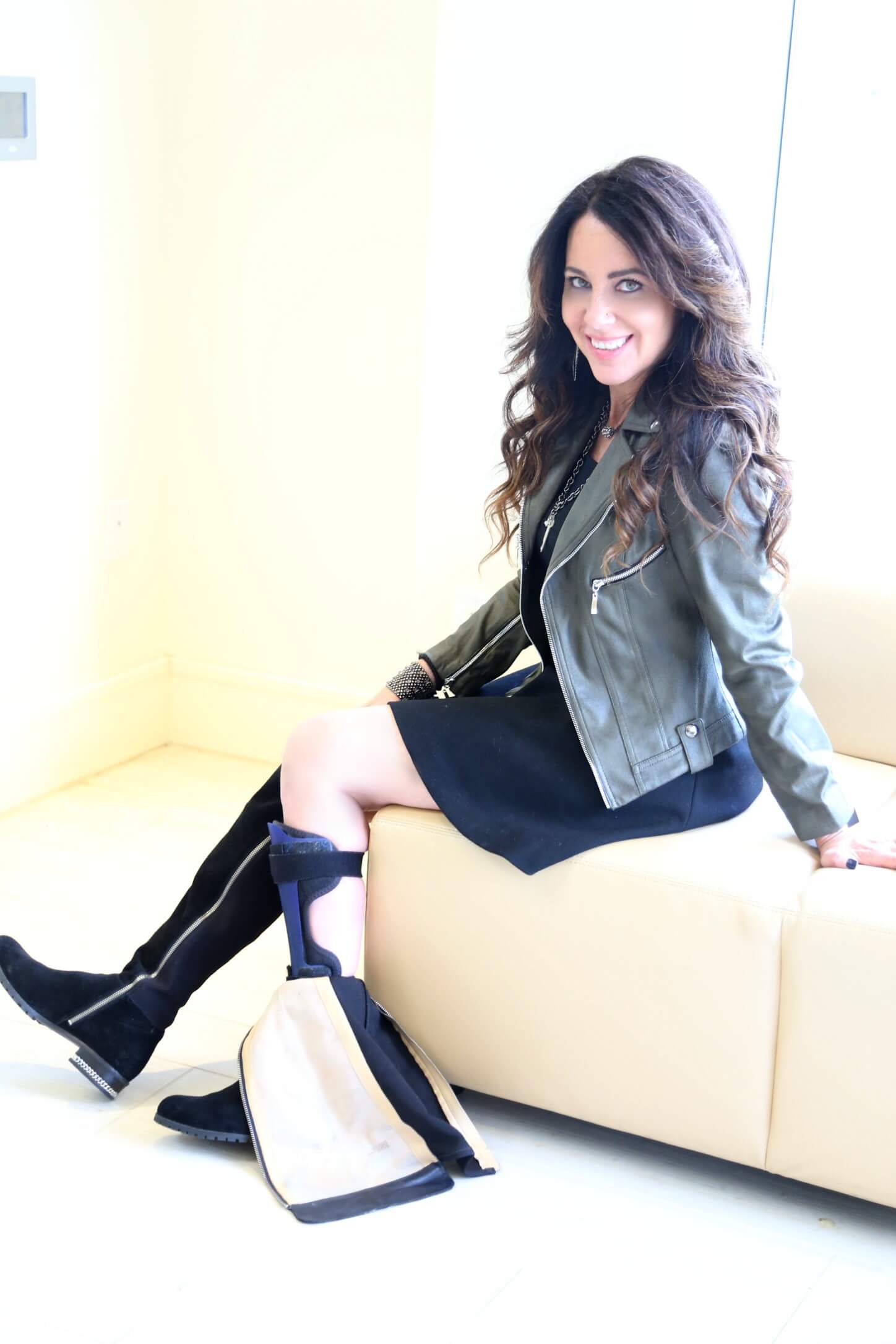Growing up with Charcot-Marie-Tooth disease (CMT), Lainie Ishbia learned about living with invisible disability — experiencing the daily struggle of movement without looking, outwardly and obviously, as if that’s the case.

She also learned, once ankle-foot orthotics (AFOs, or braces) made her disability visible, those devices designed to help make movement easier can also make a person feel, perhaps ironically, invisible in a whole new way.
“For anybody going into braces for the first time, the No. 1 worry is shoes,” Lainie says. “Doctors and orthotists don’t have the mindset that that can affect your whole being. Yes, the brace is there and you need it and it’s serving you, but feeling good in your own skin sometimes trumps a lot of that. I don’t want to look frumpy. I’m not a person who wants to wear comfort shoes. I accept the fact that I can’t wear heels — that wasn’t a loss — but you feel more confident when you’re able to wear stuff that looks good.
“When you’re disabled, you already feel invisible, so to make it so that you’re even more invisible reinforces that.”
Lainie, who’s in her 40s now, was in high school when she first had preventative surgery that fused her ankles for stability, and was in her late 20s when she got her first pair of AFOs. The braces are designed to make walking heel-to-toe easier, preventing tripping — something that, for Lainie, was leading to a lot of falls. She was living in Chicago while getting a masters degree in social work at the time. She was also, she says, going through some self-esteem issues.
“I had a lot of problems with body image and self-esteem related to having CMT, but CMT wasn’t an articulated thing,” she says. Her mom had CMT (and her sister and teenage daughter have it, too), but when Lainie was young, her mother didn’t have a regular doctor. Instead, her mom persevered — and so Lainie did also.
“I never brought up my self-esteem issues because I didn’t realize the connection between CMT and me not feeling great about my body,” she says.
Enter the AFOs.
“When I first got custom braces, I was miserable,” Lainie says. “I felt like I was miserable to be around and miserable about having them. I felt so limited, yet at the same time, they helped me.”

Lainie started looking for ways to make the braces fit better into her life — and her identity. She found AFO liners that covered the braces so she could wear them with sandals, which felt revolutionary to her. She found a local seamstress who could make the liners inexpensively and went through quite a few pairs. Eventually she upgraded to carbon fiber AFOs, and determined not to be confined to the sturdy sneakers usually recommended to AFO users, she began looking for options.
Her attitude wasn’t unlike her mom’s. Her mom modified her own clothes to make getting dressed easier, and she continued to go out and do things every day, Lainie says. And, too, in social work, Lainie helps mothers and adolescents develop self-esteem and assertiveness skills. “That has always been my thing,” she says.
“I am a person who adapts,” Lainie says. “I will find shoes that fit my AFOs.”
And she did — more than a few pairs of boots, actually.
A friend pointed out that Lainie’s attitude and resourcefulness might be beneficial to others like her. Not everyone knows what questions to ask or where to look for solutions, Lainie’s friend said.
Lainie liked to write. She had tips to share. And so Trend-ABLE was born.
At Trend-ABLE.com, Lainie blogs about how (and where) to find stylish boots and shoes that work with AFOs — plus a host of other style and lifestyle ideas and suggestions, like how to maintain your balance discreetly at parties or other events that involve a lot of standing, how to fray or snip denim to accommodate devices or shaky hands, and all kinds of ways to grip, pull, carry and pick up everyday items. She also features inspiring women in the disability community and writes about the emotional and social realities of living with disability.
“It’s not focused on disability itself but focused on ways to live your life and get out of the house and look and feel your best,” Lainie says.
Trend-ABLE isn’t a year old yet, but it’s already gained a sizable following: 2,000 to 2,500 visitors stop by each month.
“If clothes aren’t your thing, if fashion isn’t important to you, that’s OK,” Lainie says. “There is still a true connection between feeling good in your own skin. When you wear clothes that give you confidence, not only does it allow you hold yourself up higher, you’re getting positive messages from other people, and that makes you feel good inside. If I’m wearing something I feel uncomfortable in, I’m not going to be able to assert myself because I’ll be thinking about how I feel different or I don’t feel good.”
It’s really, Lainie says, about focusing on what you can control about how you feel instead of focusing on what you can’t. CMT and diseases like it take away ability, but there are ways to preserve independence and individuality — and to be visible.
“If I’m wearing something I’m proud of and that brings out my best assets,” Lainie says, “then I’m going to feel better about asking for help. I’m going to receive help better, and my life is going to be better.”
Read more about Lainie, along with her latest blogs, at Trend-ABLE.com.
